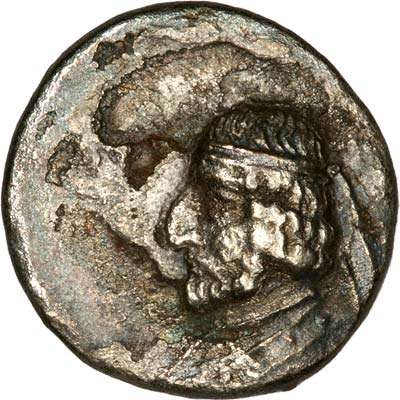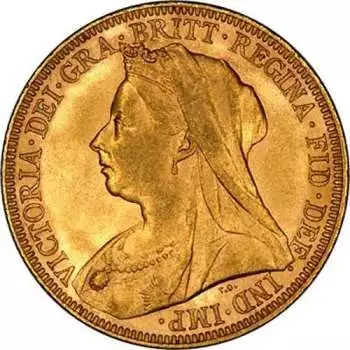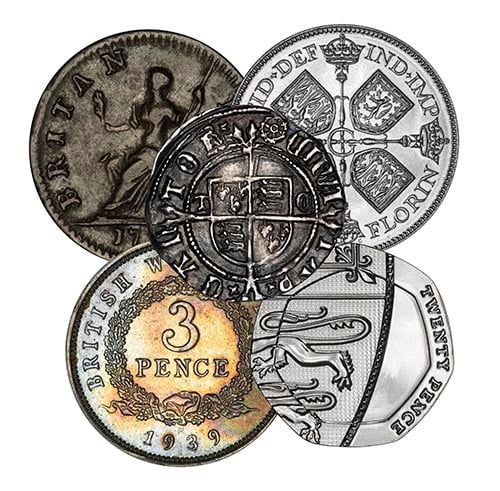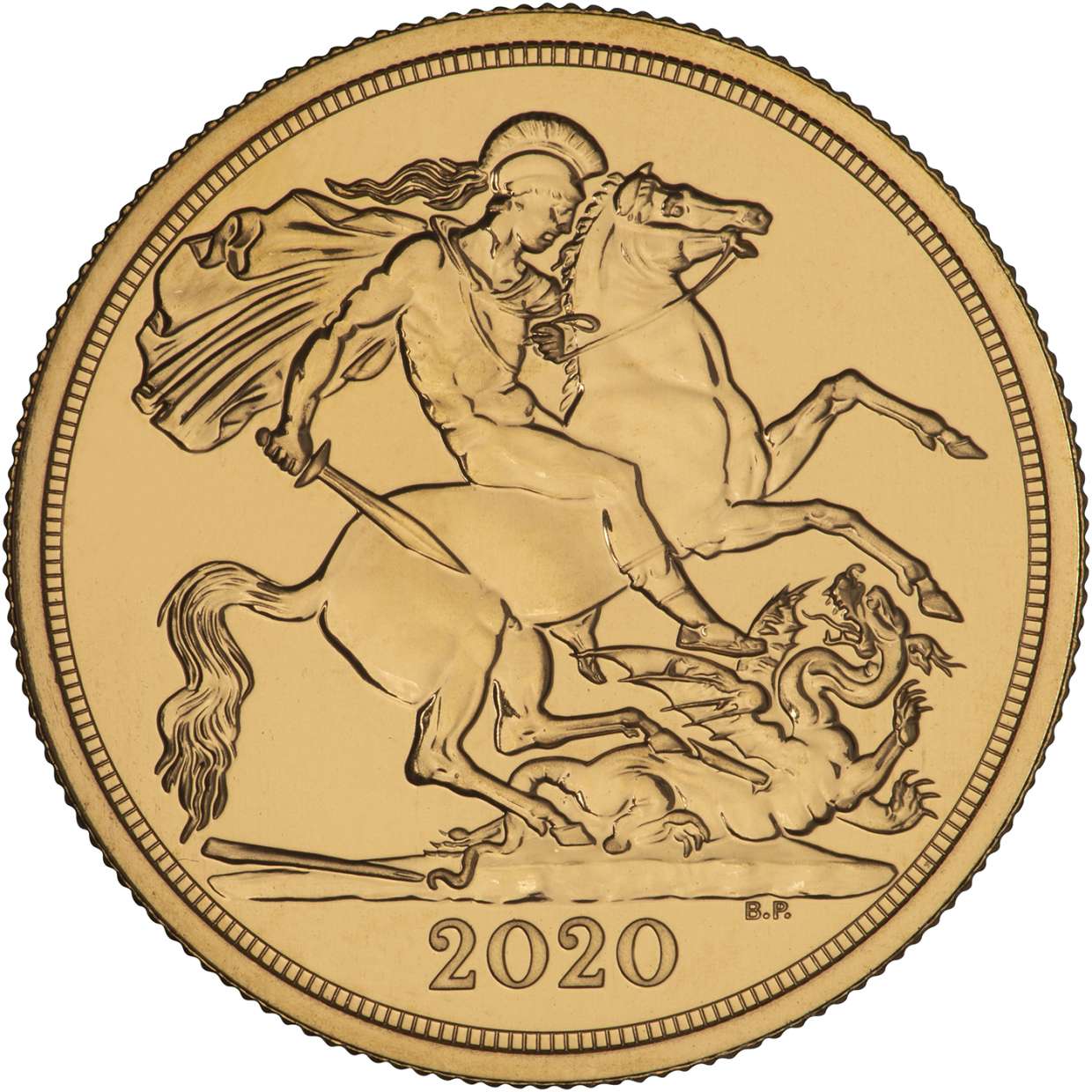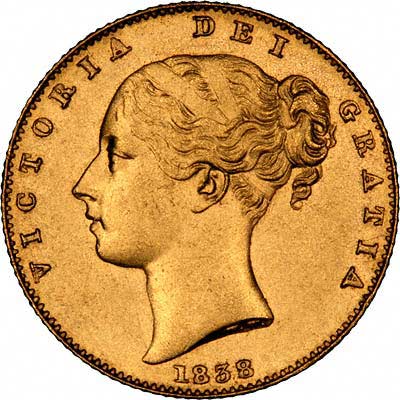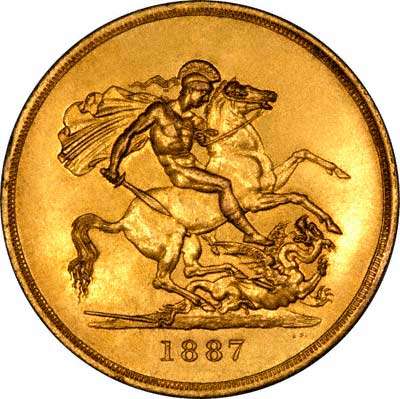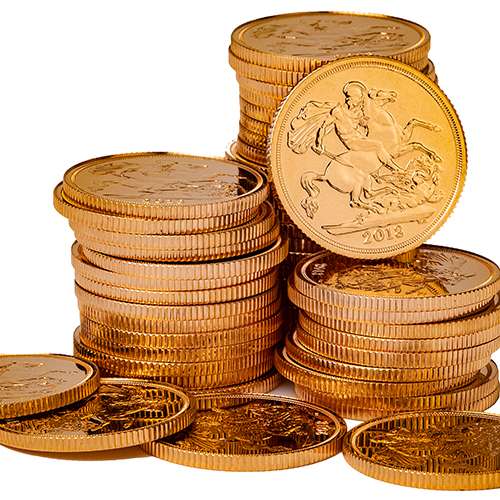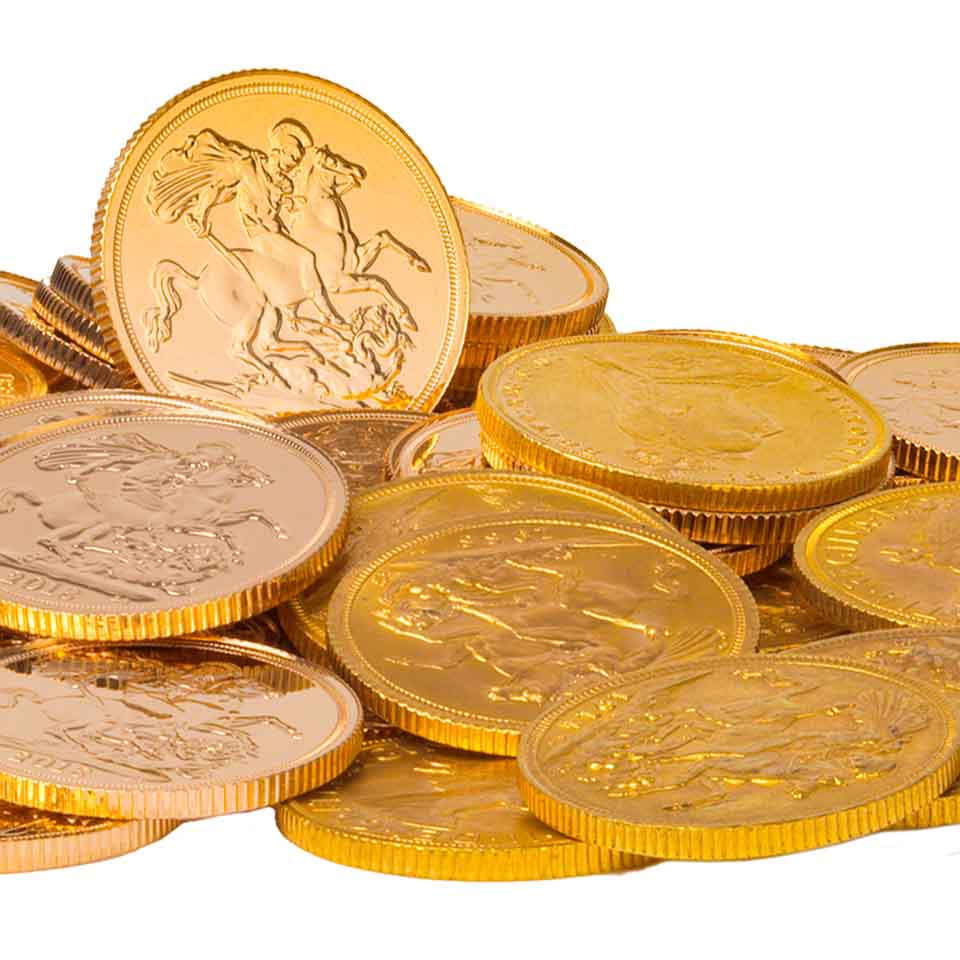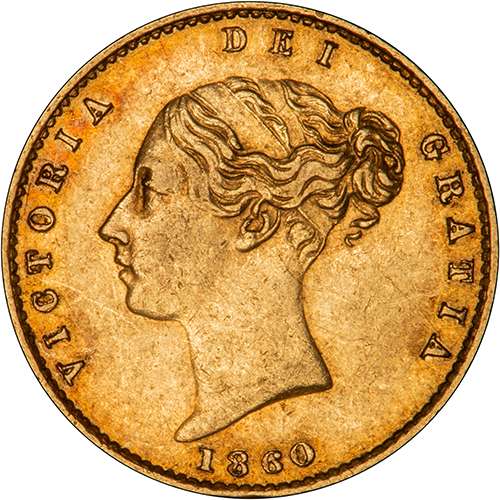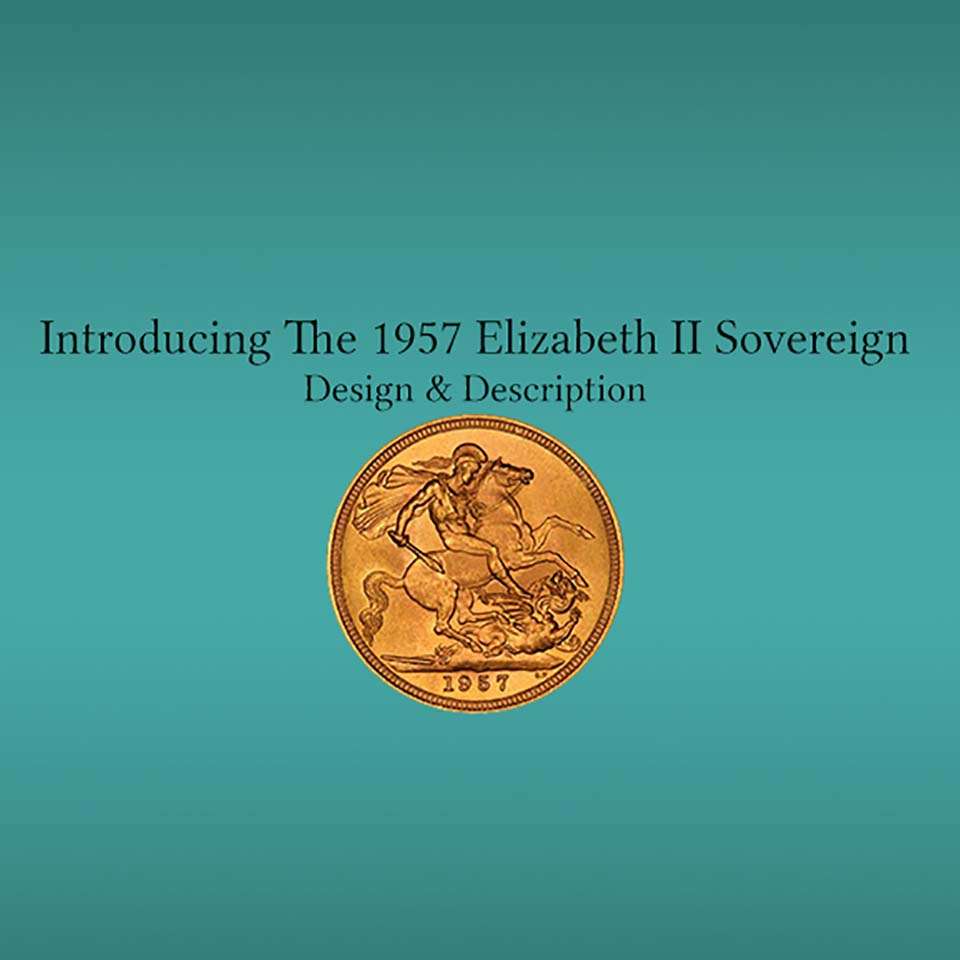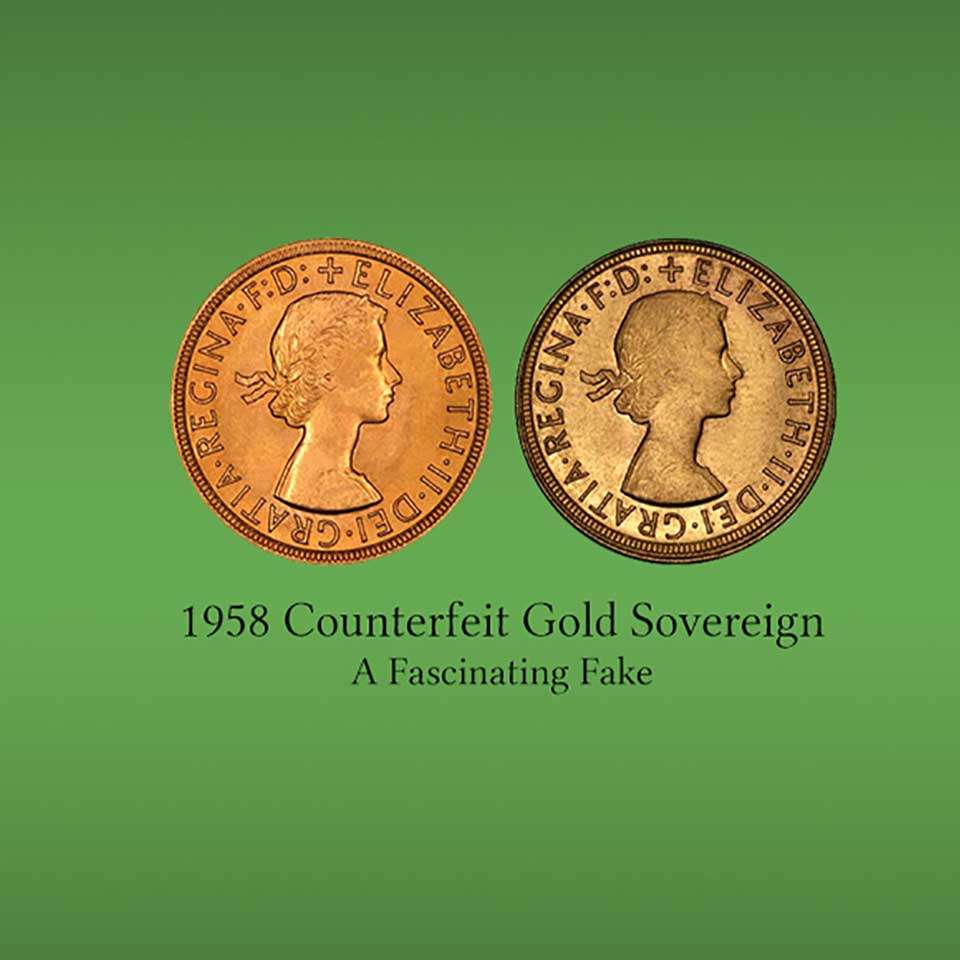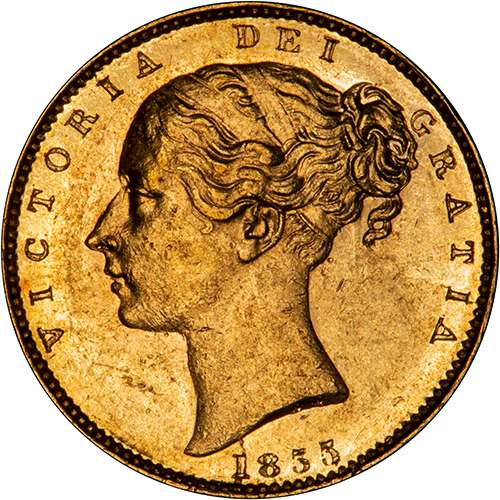Sovereign Information
Synopsis
Welcome to our blog article on British Sovereigns. If you are interested in buying please follow these links to our bullion sovereigns and our graded sovereigns.
The sovereign is Britain’s most popular gold coin and is probably the most famous gold bullion coin, both historically and globally. The sovereign is legal tender and is therefore Capital Gains Tax exempt which makes it a favourite with investors. The gold sovereign is not just a bullion coin, it is also one of the most collected coins by numismatists and certain years can achieve record prices. Whilst the sovereign, also referred to as the full sovereign, at just under a quarter troy ounce of gold, is the most popular weight, the coin is also issued in the following sizes quarter, half, double (£2) and quintuple (£5).

The History of the Sovereign
The English sovereign was first issued as a gold hammered coin in 1489 for the King Henry VII. Designed by German engraver, Alexander of Bruchsal, the obverse featured the King in his coronation robes seated upon his throne, symbolising the power, success and splendour of the fledgling Tudor dynasty. The reverse design featured the Royal Arms of England set within a double Tudor rose. The first gold sovereign weighed 15.55 grams (half a troy ounce), was made from 23 carat gold and had a face value of one pound sterling. There were a number of changes to the weight of the sovereign until it was last struck in 1604 when it was replaced by the gold hammered Unite and Laurel coins.
The First Sovereign - 1489 or 1817?
Although the first British gold sovereign was issued in 1489 for Henry VII, the modern gold sovereign was first struck in 1817 under George III.

The Modern Sovereign
In 1816, after the gruelling Napoleonic Wars and a crippling shortage of coins, the British government ordered a huge reform of British coinage. It was decided that a new gold coin would be struck – the sovereign.In accordance with British Coinage Act of 1816, the sovereign would be made in 22 carat gold (0.916 fineness), weighing 7.9881 grams with 0.2354 troy ounces of fine gold, a diameter of 22.05mm, a milled edge and a nominal value of one pound or twenty shillings. The specifications have remained the same and are still used for the production of sovereigns issued today.
The first modern gold sovereign was struck in 1817 in the Royal Mint’s new premises in Tower Hill using their newly acquired steam powered coin press which had been designed by Matthew Boulton and James Watt.
St George on the Sovereign
The sovereign was widely acclaimed for both its attractive design, usefulness and its durability. Whilst the obverse bore the portrait of George III, it was the reverse design that stole the show. Set within a wide garter with the inscription HONI SOIT QUI MAL Y PENSE, Benedetto Pistrucci’s dramatic engraving of St George and the dragon has become synonymous with the gold sovereign. It was the 200th Anniversary of the Sovereign in 2017 and this British gold bullion coin has stood the test of time. In 1821, the garter was removed and the image of St George and the dragon was enlarged on the coin's surface. Pistrucci’s classic design of St George with a short sword in one hand and the reins in the other, mounted upon a horse rearing over a slain dragon has stood the test of time and is still featured on sovereigns today

As the British Empire expanded during the Queen Victoria’s reign, the sovereign became the most widely circulated gold coin in the world. Over 206 million sovereigns were issued during her reign.

During her 63 year reign, Victoria sovereigns were struck using three portraits, the Jubilee Head, Old Head and young head with two reverses, the Shield and St George and Dragon. There were many small variations on both the obverses and reverse designs, as well as errors and overdates all of which can affect the value of the sovereign.
The Royal Mint opened a number of branch mints in various outposts of the Empire to produce sovereigns close to the main sources of gold mining. The first overseas branch mint was opened in Sydney, Australia in 1855. The majority of sovereigns continued to be struck in London but they were also produced in branch mints in Australia’s cities Sydney (1855-1926), Melbourne (1872-1931) and Perth (1899-1931). This extended to Ottawa, Canada (1908 -1919) and Bombay, India (1918) and Pretoria, South Africa (1923-1932). In 2013, The Royal Mint issued a licence for sovereigns to be minted in India.
A Real Coin
The sovereign was a real circulating coin until the outbreak of the First World War in 1914. At about this time, most countries in the world reduced or stopped production of gold coins for circulation, and switched to a "token" coinage.
By 1933, almost every country had stopped gold coin production, and it did not restart until about 1960. Even now, there is no country on the planet where gold coins regularly circulate as part of their coinage system.
Technical Specification of a Sovereign
| Diameter | 22.05mm |
| Weight | 7.988g |
| Alloy | 22 carat gold |
| Fineness | 0.916 |
| Actual Gold Weight | 02354 Troy oz |
Mintmarks
The mint mark defines where the sovereign was minted. You can find mint marks on the obverse or the reverse of the sovereign. An absence of a mint mark indicates that the sovereign was minted in london.

British Coinage
With a value of one pound or twenty shillings, it was common for sovereigns to be used to pay for goods and services until the First World War. The war was expensive and gold was needed to finance the war effort. The British government introduced banknotes to replace gold sovereigns and so began the demise of the sovereign as circulation coinage. Production of sovereigns at the London Royal Mint ceased in 1917 although sovereigns continued to be issued by the Royal Mint’s branch mints until 1932. There was an exception to this; in 1925 sovereigns were minted in London as were the restrikes of 1949, 1950 and 1951.
Restrikes
Between 1949-1951, the Royal Mint issued sovereigns struck in London using existing dies for the 1925 George V sovereigns. It is understood that over 886,000 of these backdated sovereigns were minted to fulfil a market demand for gold bullion, to control rising premiums and to counter forgeries from Italy and the Middle East.Sovereigns were struck in 1937 as pattern proof coins for Edward VIII, in the 1937 George VI four coin proof set and for Elizabeth II in 1953. They were not issued for circulation again until the reintroduction of gold sovereigns in 1957.


The Elizabeth II sovereigns have featured five definitive UK coin portraits; (first) by Mary Gillick from 1957 to 1968, (second) by Arnold Machin from 1979 to 1984, (third) by Raphael Maklouf from 1985 to 1997, (fourth) by Ian Rank-Broadley from 1998 to 2015 and (fifth) by Jody Clark (2015 to Present).

A portrait by James Butler was commissioned to commemorate the Queen’s 90th Birthday which features on the 2016 proof sovereigns.
Bullion, Brilliant Uncirculated or Proof – What is the Difference?
Bullion
Bullion is not a grade, it is a term that is used to describe coins which are sold at or close to their intrinsic metal value. Sovereigns which were issued for circulation between 1817 - 1932 were minted as uncirculated coins with a face value of one pound. Both circulated and uncirculated sovereigns which are sold at a low premium can be called bullion sovereigns. Uncirculated sovereigns are usually struck once when they are minted and are often bought for investment purposes.

Brilliant Uncirculated
Brilliant Uncirculated or B.U is a term that has been introduced by The Royal Mint, it is not a grade. It indicates that the sovereign has been struck twice during production to give a slightly sharper definition. However, the prices charged do not usually reflect the intrinsic metal value or value for money. Often the Brilliant Uncirculated coins are issued in a presentation card or box and may have a certificate.
Proof
Proof is a grade which reflects the high standard of finish of the coin. Proof sovereigns were often issued to commemorate new portraits and can be found in both a matt finish (1817-1953) and a highly polished mirror and matt finish (1979-now). It is now common for proof sovereigns to be issued each year, in 2015 two proof sovereigns were issued, one with the fourth definitive UK coin portrait by Ian Rank Broadley and one with the fifth portrait by Jody Clark. Often proof sovereigns have been struck between four and seven times to achieve the sharp definition of the design. They will have a mintage limit and will have been issued in a presentation box, however, modern proof coins are also issued in a plastic capsule to protect the delicate surface and will have a certificate of authentication. You should never remove the coin from the capsule as they are easily damaged which will affect the value and desirability. Between 1982 and 1999, sovereigns were only struck in a proof finish.
Sovereign Designs
Whilst the obverse of the sovereign has changed with each monarch, the most popular design on the reverse of the coin for almost 200 years has been Benedetto Pistrucci’s St George and the dragon engraving.
Not Every Year Exists!
It should be noted that not every date exists for gold sovereigns. In fact, gold sovereigns were not issued for circulation after 1932, although the Royal Mint resumed production in 1957 partly to meet world demand for gold bullion coins. The only dates minted between 1932 and decimalisation were 1957 to 1959, and then 1962 to 1968. These dates all bear the first portrait of Queen Elizabeth II as used on almost all pre-decimal coins, with the familiar St. George & Dragon design on the reverse. Of these dates 1957 and 1959 are the two most difficult to find and as a result are the most collectable.
Sovereign Facts - Did You Know?
- Soldiers were given sovereigns in their survival kits to be used as bargaining tools if they were captured by the enemy. This practice continued up to the First Gulf War in 1991.
- It was common practice in Victorian times to remove worn sovereigns from circulation, melt the gold and use it to make new sovereigns.
- Sovereigns were used to repay debts to foreign governments, they were often melted and reformed into bars to comply with regulations.
- The average body contains 0.2248 milligrams of gold – you would need 35,534 bodies to have enough gold for one sovereign.
- The pound coin is Britain’s most popular pocket money coin – whatever you do, don’t get your modern pound coins mixed up with your sovereign pound coins.
- If you lay sovereigns in a straight line from John O’Groats to Land’s End you would need 43,990,929 sovereigns.
- Each year the sovereign is subjected to The Trial of the Pyx to ensure that specifications are adhered to.
- In 2013, a licence was awarded to MMTC-PAMP to mint gold sovereigns in India.
How much are gold sovereigns worth?
The majority of sovereigns are bullion sovereigns – they have been bought for investment and are worth their intrinsic metal value.
eg. If the live gold price is £1000 per one troy ounce, a sovereign = £234.54. Most dealers will buy these coins at a slight premium under the intrinsic metal value.
However, there are a number of sovereigns which are highly sought after and will fetch much higher prices. With all sovereigns, the better the condition of the coin and the lower the mintage, the more valuable they will be.
Our Top 10 Most Expensive Sovereigns
- 1937 Edward VIII Proof Sovereign
- 1953 Elizabeth II Proof Sovereign
- 1850 Victoria Sovereign, overdate 8 over 5
- 1838 Victoria Proof Sovereign
- 1819 George III Sovereign
- 1911 George V Proof Sovereign, matt finish
- 1909 Edward VII Sovereign, Ottawa mint, satin finish specimen
- 1830 George III Sovereign, Medal Alignment
- 1884 Victoria Sovereign, Melbourne mint
- 1887 Victoria Proof Sovereign, Sydney mint
Look out for:
Ansell Sovereigns
In 1859, the Royal Mint rejected a batch of gold alloy as it was too brittle for coin production. However, metallurgist, George Ansell managed to make the gold alloy tougher than normal sovereigns and the gold was used to produce the Ansell sovereign. You can spot an Ansell sovereign by the extra line in the hairband at the back of the Queen’s head.

Overdates/errors
Whilst sovereigns in high grades and low mintages are highly desirable to serious coin collectors, there is a growing demand for sovereigns with overdates and errors. An overdate occurs where a die was recut or repunched to alter the date. Errors sometimes happened when letters or numerals were accidently mixed up e.g 1 might be substituted with a capital I, or A would be an upside down V.
We Sell Sovereigns – and – We Buy Sovereigns
We have a huge range of sovereigns for sale, from bullion to collectible sovereigns in varying grades from most years and mintmarks.
We are always interested in buying sovereigns, bullion or high grade sovereigns, particularly rare years or mints. Whether you have one coin or a whole collection, contact us on 01253 343081 or by email at [email protected] and we will make you an offer.
Related Blog Articles
Popular Products
This guide and its content is copyright of Chard (1964) Ltd - © Chard (1964) Ltd 2024. All rights reserved. Any redistribution or reproduction of part or all of the contents in any form is prohibited.
We are not financial advisers and we would always recommend that you consult with one prior to making any investment decision.
You can read more about copyright or our advice disclaimer on these links.


